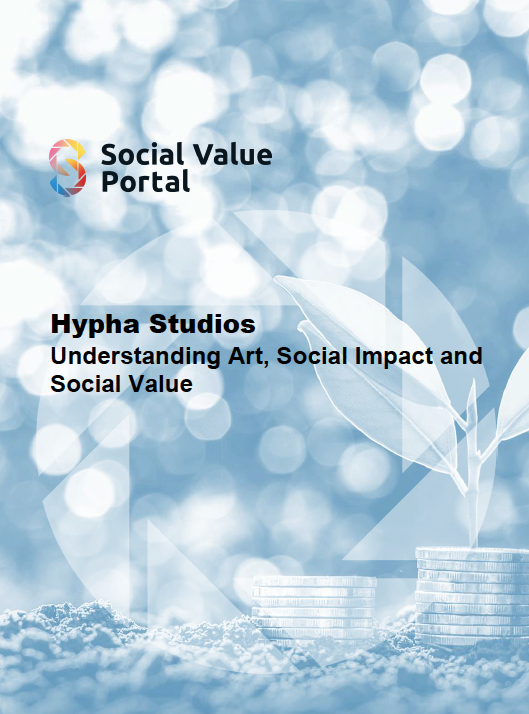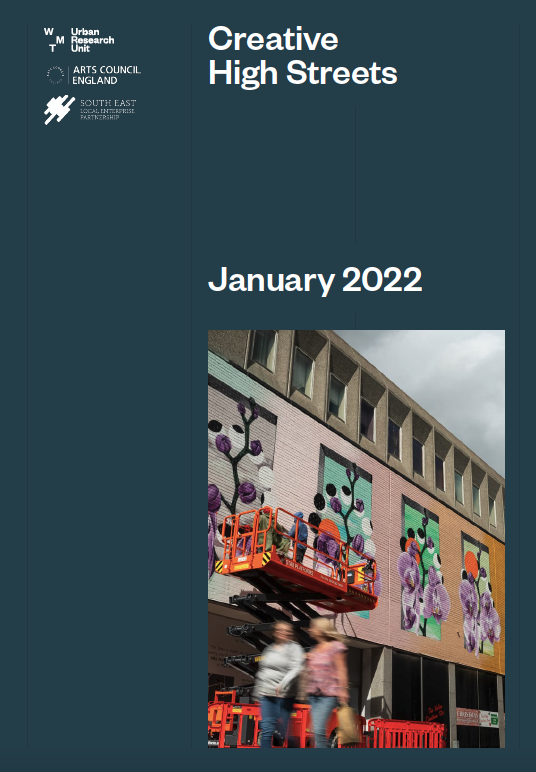Creating New Cultural Spaces: REPORTS & CASE STUDIES
Hypha Studios are open to the public, creating new forms of engagement in the centre of our communities. A condition of being placed in a free studio are the public events that the artist creates to engage local communities. The public program consists of live music/ exhibitions/ceramic classes/life drawings or other workshops. This is to encourage learning and interest of the public and for the creative’s practice to reach a much wider audience. We are reimagining our high streets and engaging local communities by working with councils, architects, developers, shopping centres managers, warehouse owners and commercial landlords all over the country. Our public program that is led by the creatives we place will generate new footfall and support existing businesses.
Below you will see reports and case studies that include us in how we are delivering social value through culture on our highstreets
SOCIAL VALUE PORTAL – Understanding Art, Social Impact and Social Value
Over 2022, Social Value Portal have provided pro-bono support to Hypha Studies to help understand social value and impact in the arts and culture sector, and to provide recommendations for Hypha Studios to further their creation and measurement of social impact and social value.
Social impact is the effect of an organisation’s actions on the wellbeing of a community. The impact is a significant and positive change that addresses a social, environmental, or local economic challenge. Social impact is created as a result of deliberate actions seeking to achieve this goal.
This report considers how Hypha Studios can best achieve its mission of supporting artists, creatives, and communities in making and experiencing art, and in so doing, play its part in contributing to equitable, sustainable development. To do so this report first addresses the state of art and impact assessment, considering how the arts sector is creating impact, what recent research says on the impact of the arts, and how arts organisations are measuring their impact. Next, we address the question of how arts organisations can better create and measure impact. Finding current practices in impact-creation and measurement suboptimal, we recommend a bespoke approach that Hypha Studios can draw upon to maximise the value it is creating for society, its local communities, and the artists and creatives that it supports.
Click here to read the report
CREATIVE HIGH STREETS – ARTS COUNCIL ENGLAND
The South East Local Enterprise Partnership (SELEP) and Arts Council England have joined forces to provide guidance on the clear, decisive action that can be taken by the cultural and creative sector to breathe new life into our high streets and kickstart a whole new economy for towns.
The South East Local Enterprise Partnership (SELEP) and Arts Council England commissioned We Made That and PRD to develop a better understanding of how cultural and creative organisations can be embedded in high streets and drive their reinvigoration and reinvention. The research has been informed by a series of high street case studies, exploring a range of innovative actions, strategies and methods that could better unlock positive and inclusive growth for the region and bring together the high street recovery and creative sector growth agendas.
Click here to read the report
Cultural High Streets, a collaboration with RCKa
Cultural High Streets is a collaboration with RCKa architects and is a creative tool kit to repurpose and reimagine empty department stores, shopping centres, warehouses and office blocks to create large scale versions of the free spaces we match creatives with currently. We believe the model we are working with to be scalable and therefore can support cultural organisations, individuals and local communities while providing aid to existing businesses and landlords.
We would still have free artist studios and workshops for community engagement, but here the idea is to host, for free, music venues, galleries, theatre groups etc to support them at this time of need so that they can then generate their own income without the financial pressure of rent. This would not only support the creative industries by incubating them at this difficult time but also use their ability to create audiences to generate footfall back to our city centres.
We have been using an example of an Oxford Street building to date, however, the model could work equally well with smaller dispersed spaces as well as a single larger building. As you can see, the concept is transferable and would still be beneficial to private landlords and maybe more excitingly, it could temporarily use local assets.
If you are a landlord and want to work with us on one of your properties to support culture in our high streets – get in touch today!
Click here to read the full case study




